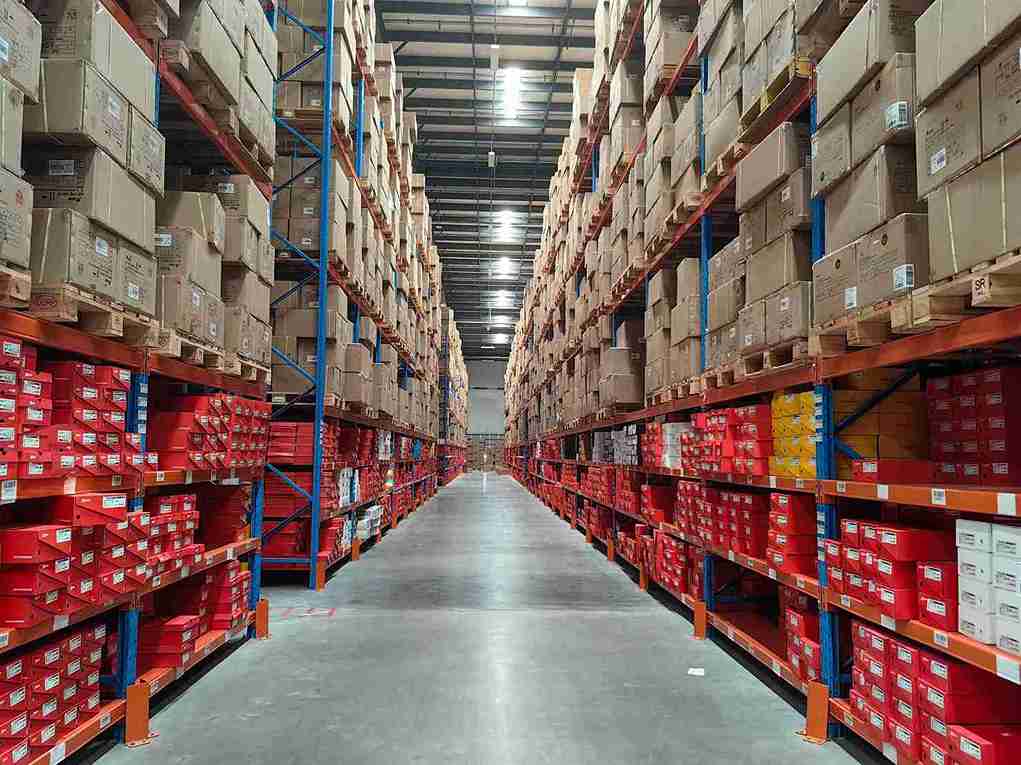📐 "First 50 Enterprise Queries Get Custom 3D Warehouse Design" Plan

Introduction: Why the Right Racking for Retail Distribution Centers is Crucial
In the competitive world of retail logistics, racking for retail distribution centers plays a pivotal role in operational success. The right storage system enhances efficiency, maximizes space, and accelerates order fulfillment—key factors in staying ahead in today’s fast-moving market.
This in-depth guide explores the best racking solutions for retail distribution centers, helping businesses choose the ideal setup for their specific needs. From high-density storage to automated systems, we’ll cover:
-
The most effective types of racking for retail distribution centers
-
How to select the right system based on inventory, space, and budget
-
Cutting-edge innovations transforming modern warehouses
-
Safety and maintenance best practices to extend racking lifespan
-
Real-world case studies of successful implementations
By the end, readers will have a clear roadmap for optimizing their racking for retail distribution centers, ensuring faster operations, lower costs, and higher profitability.

1. The Critical Role of Racking in Retail Distribution Centers
1.1 What Makes Racking for Retail Distribution Centers Unique?
Unlike standard warehouse storage, racking for retail distribution centers must accommodate high product turnover, varying SKU sizes, and rapid order processing. The ideal system balances accessibility, density, and scalability to meet fluctuating retail demands.
1.2 Key Benefits of Optimized Racking Systems
-
Maximized Storage Capacity – Efficient use of vertical and horizontal space.
-
Faster Order Fulfillment – Reduced picking time with organized layouts.
-
Improved Inventory Accuracy – Better visibility and stock control.
-
Enhanced Workplace Safety – Reduced risks of collapses and accidents.
2. Top Racking Systems for Retail Distribution Centers
2.1 Selective Pallet Racking – The Industry Standard
Best for: Retail distribution centers with diverse product ranges.
-
Advantages: Direct access to every pallet, adaptable configurations.
-
Drawbacks: Lower storage density compared to high-density alternatives.
2.2 Push-Back Racking – High-Density Storage Solution
Best for: Retail distribution centers needing deep storage with LIFO inventory.
-
Advantages: Stores multiple pallets deep without sacrificing accessibility.
-
Drawbacks: Higher initial investment than selective racking.
2.3 Pallet Flow Racking – Ideal for FIFO Inventory
Best for: Perishable goods and fast-moving retail products.
-
Advantages: Gravity-fed system minimizes manual handling.
-
Drawbacks: Requires uniform pallet sizes for smooth operation.
2.4 Drive-In/Drive-Thru Racking – Maximizing Space Efficiency
Best for: Bulk storage in retail distribution centers with high-volume SKUs.
-
Advantages: Extremely high storage density.
-
Drawbacks: Slower retrieval times for individual pallets.
2.5 Mobile Racking – The Space-Saving Innovation
Best for: Retail distribution centers with limited floor space.
-
Advantages: Movable aisles increase storage capacity by up to 80%.
-
Drawbacks: Higher cost and maintenance requirements.
3. How to Choose the Best Racking for Retail Distribution Centers
3.1 Assessing Warehouse Layout and Space Constraints
-
Narrow aisles? Narrow-aisle racking or mobile racking may be ideal.
-
High ceilings? Consider multi-tier mezzanine racking systems.
3.2 Matching Racking to Inventory Characteristics
-
Fast-moving goods: Pallet flow or push-back racking.
-
Slow-moving inventory: Selective pallet racking is sufficient.
-
Mixed SKUs: A hybrid racking approach may be necessary.
3.3 Evaluating Load Capacity and Durability
-
Heavy-duty loads? Structural racking with reinforced beams.
-
Lightweight products? Adjustable wire shelving may suffice.
3.4 Budget Considerations and ROI Analysis
-
Short-term solution: Used or refurbished racking.
-
Long-term investment: Automated storage and retrieval systems (AS/RS).
4. Innovations in Racking for Retail Distribution Centers
4.1 Automated Storage and Retrieval Systems (AS/RS)
-
Robotic pallet shuttles and AI-driven inventory management are revolutionizing racking for retail distribution centers, reducing labor costs and improving accuracy.
4.2 Smart Racking with IoT Integration
-
Real-time load monitoring and predictive maintenance alerts help prevent overloading and equipment failures.
4.3 Sustainable Racking Solutions
-
Recycled steel racking and energy-efficient designs are gaining traction in eco-conscious retail distribution centers.
5. Safety and Maintenance Best Practices
5.1 Routine Inspections and Preventative Maintenance
-
Weekly checks for damaged beams, loose bolts, and alignment issues.
-
Annual professional inspections to ensure compliance with OSHA standards.
5.2 Employee Training for Safe Operations
-
Proper loading techniques to prevent overloading.
-
Aisle marking and signage to enhance forklift safety.
5.3 Compliance with Industry Standards
-
OSHA, ANSI, and RMI guidelines must be followed to avoid penalties and accidents.
Conclusion: Maximizing Efficiency with the Right Racking for Retail Distribution Centers
Selecting the best racking for retail distribution centers is a strategic decision that impacts storage capacity, operational speed, and long-term costs. By evaluating warehouse needs, inventory flow, and budget constraints, businesses can implement a system that enhances productivity and reduces inefficiencies.
Investing in the right racking solution for retail distribution centers ensures faster order processing, better space utilization, and a safer work environment—key factors in maintaining a competitive edge.
FAQs: Racking for Retail Distribution Centers
1. How do I determine the right racking height for my retail distribution center?
The ideal height depends on forklift reach capabilities and building clearance, typically ranging from 20 to 40 feet.
2. Can push-back racking be used for perishable goods?
Yes, but FIFO systems like pallet flow racking are often preferred for perishables.
3. What’s the average cost of racking for retail distribution centers?
Costs vary widely, from $50 per pallet position for selective racking to $300+ for automated systems.
4. How can I increase storage density without changing racking systems?
Implementing narrow-aisle forklifts or double-deep racking can boost capacity without a full redesign.
5. What are the most common racking failures in retail distribution centers?
-
Overloading beams
-
Forklift collisions
-
Improper installation




